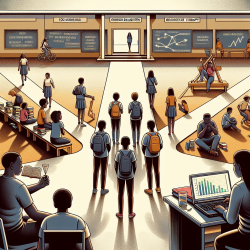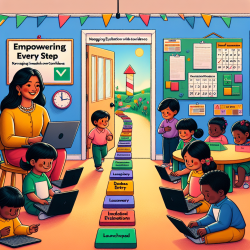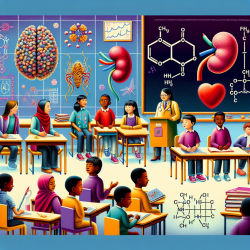Introduction
As practitioners dedicated to enhancing the well-being of children, it's crucial to stay informed about the factors that influence risky behaviors among adolescents. A recent study titled Risky sexual behaviors and their associated factors within high school students from Collège Saint André in Kigali, Rwanda: An institution-based cross-sectional study sheds light on this pressing issue. Understanding these factors can guide us in developing effective interventions that can significantly improve outcomes for our young clients.
Key Findings
The study conducted a cross-sectional analysis of 263 students from Collège Saint André in Kigali, Rwanda. It revealed that 41% of the participants had engaged in risky sexual behaviors (RSB) at some point in their lives. Key factors associated with RSB included:
- Domestic violence: Students who experienced domestic violence were more likely to engage in RSB (OR=4.22).
- Grade level: Students in grades 11 and 12 showed higher odds of engaging in RSB compared to those in grade 10.
- Substance use: Alcohol users were significantly more likely to engage in RSB (OR=3.9).
- Living arrangements: Students not living with biological parents had higher odds of engaging in RSB (OR=2.5).
- Peer pressure: Students experiencing peer pressure were more likely to engage in RSB (OR=3.9).
Implications for Practitioners
For practitioners working with adolescents, these findings highlight the importance of addressing the broader social and environmental factors that contribute to risky behaviors. Here are some strategies to consider:
- Implement targeted interventions: Develop programs that specifically address the identified risk factors such as domestic violence and peer pressure.
- Enhance parental involvement: Encourage open communication between parents and children about sexual health to reduce the likelihood of RSB.
- Promote substance abuse prevention: Integrate substance use education into your therapy sessions to mitigate its impact on risky behaviors.
- Foster peer support groups: Create safe spaces for students to discuss their challenges and receive support from their peers.
Encouraging Further Research
While this study provides valuable insights, further research is needed to explore the nuances of RSB among adolescents in different contexts. Practitioners are encouraged to engage in or support research efforts that aim to deepen our understanding of these behaviors and their associated factors.
Conclusion
Understanding the factors associated with risky sexual behaviors among adolescents is crucial for developing effective interventions. By leveraging data-driven insights, practitioners can make informed decisions that lead to better outcomes for children. To read the original research paper, please follow this link: Risky sexual behaviors and their associated factors within high school students from Collège Saint André in Kigali, Rwanda: An institution-based cross-sectional study.










